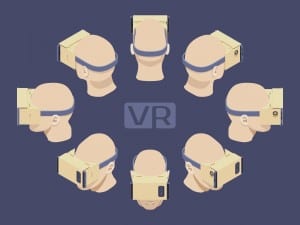Blog
You Might Also Want to Read
360 Videos on Facebook and YouTube
YouTube and Facebook recently opened the floodgates of a new video-viewing format that is going to change the game for users, publishers and content makers. 360 video is becoming a new mainstream technology that allows the viewer to immerse themselves into a video by incorporating a taste of virtual reality to the experience. On a desktop computer, the user can click around to change their perspective, kind of like being able to maneuver yourself Google Earth-style inside the video itself. On a mobile phone, the 360 video content is even more incredible, as it uses the devices’ gyroscope to track your…
Alfred Goldberg November 17, 2015 (Updated on February 6, 2024)- 2 min read

On a mobile phone, the 360 video content is even more incredible, as it uses the devices’ gyroscope to track your relative position within the video. By tilting your phone by a few degrees, it’s as though you’re tilting your eyesight to that part of the landscape.
Watching 360 degree content is pretty cool. But what about creating 360 or spherical content? For content creators, 360 video allows us to publish stories in a way that brings the viewer into another world. By viewing the content with a virtual reality headset, it’s exponentially more immersive to move your head around and view different aspects of that world.
In order to produce these videos, you need a 360 camera rig set up to capture film. It records all 360 degrees from a single point. One of the most common configurations is through using multiple GoPro cameras attached to a single rig. The simplest of rigs start at 6 GoPros, but others have incorporated different numbers of cameras in order to achieve different visual effects. There are also many self-contained cams that capture 360 degree video such as the Nokia Ozo, the Bubl and the 360fly. In fact, we’ll be reviewing the 360fly in an upcoming video presentation, so be sure to follow up on the Absolute blog.
After you’ve captured your video, it can be uploaded onto a platform that stitches them together. There are a few companies who’ve been doing this already, including Sphere which is headed by Charles Armstrong, who started the company in Florida. The biggest player is Kolor, a hosting platform in partnership with GoPro, which offers some free and paid editing tools for Mac, Windows, soon Linux, and also as mobile apps for iOS and Android.
360 videos are only boostable by a select group of advertisers (Disney, Corona, Samsung, AT&T), though this will likely change. In the same vein, it’s conceivable they will open up 360 video publishing to Instagram in the future.
Indeed, 360 video has opened up a new dimension of advertising and storytelling potential, and seeing what content comes out of this new medium will be game changing for many industries in the pursuit to create compelling, engaging and immersive content.
November 17, 2015 - 2 min read

6 Tips for Dealing with Negative Comments on Twitter